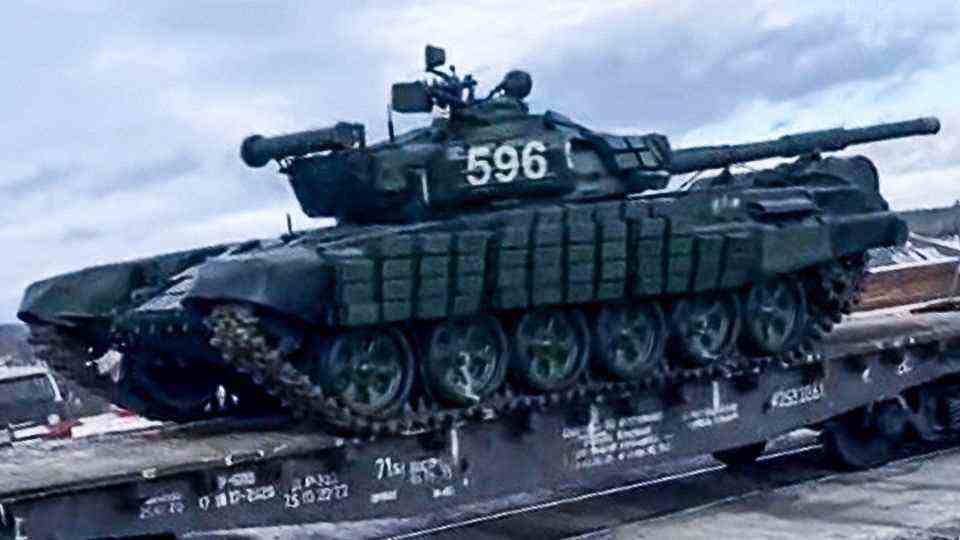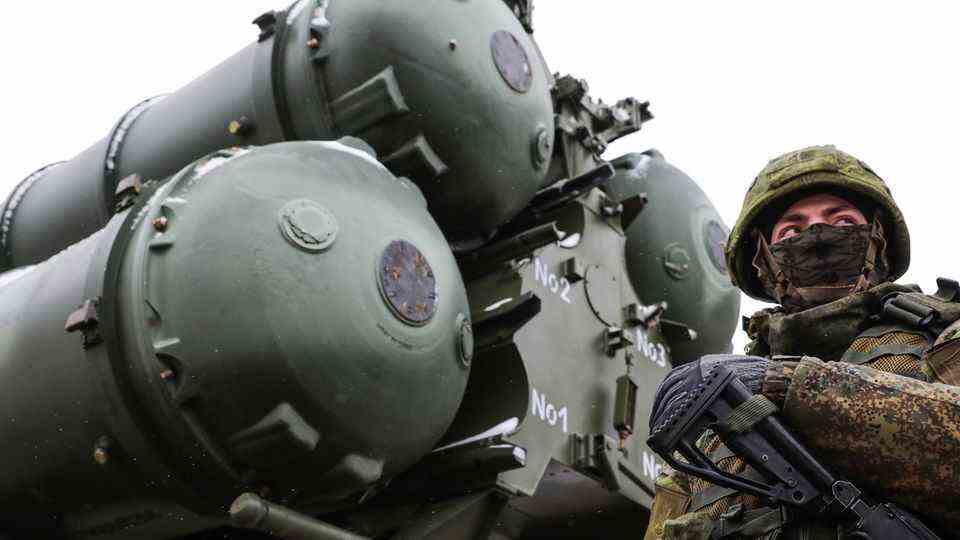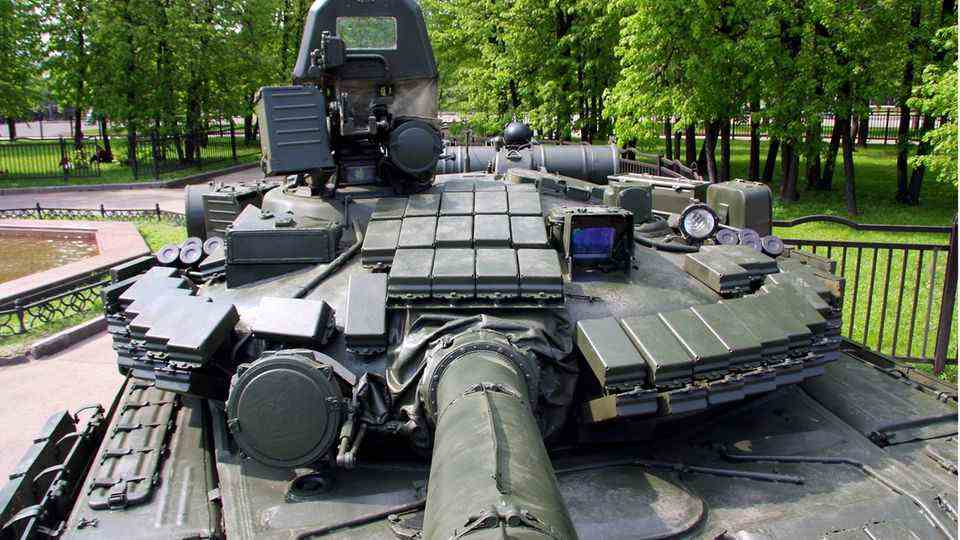analysis
Ukraine crisis
Attack through the Chernobyl zone – what the Belarus option means for Putin
Russian forces are conducting maneuvers around Ukraine.
© Erik Romanenko/ / Picture Alliance
The whole world is watching Ukraine, and almost unnoticed, Putin has secured Belarus as a military deployment area. He threatens Kiev and shifts the military balance of power throughout Eastern Europe in his favor.
At the moment, no one can say whether the Kremlin chief is seriously considering an invasion of Ukraine. Because even without an attack, Russia has already achieved an important victory in Belarus. What is certain is that the troops of around 100,000 troops massed around Ukraine would not be sufficient for this. However, they form a solid basis for further troop build-up in order to reach the required 200,000 men.
Desert storm in the east
A full-scale invasion would see a Desert Storm-like war in Iraq. The superior Russian air force and Moscow’s missiles would decapitate the enemy’s leadership while destroying Kiev’s air force and air defenses. Rob Lee of the Foreign Policy Research Institute maintains one of the most informative Twitter accounts on the Ukraine crisis. He says: “Russia is capable of annihilating the Ukrainian military units from afar with weapons like the Iskander ballistic missiles. We almost never see modern weapons like these being used; they give Russia the ability to shoot thousands of people every day causing casualties.” The defenseless ground forces would then be decimated by bombing raids. Before a tank rolls, the war would already be decided. For an invasion, the Kremlin could freely choose the attack routes and the timing, since almost all of Ukraine is surrounded.
Surrounded by Belarus
Belarus is of central importance in the deployment plan. Almost unnoticed by the public in the West, the country in the slipstream of the Ukraine crisis has fallen completely under Russia’s influence. For many years, the dictator Lukashenko steered a course between the EU and Russia, with sometimes unpredictable decisions. He didn’t want the West to oblige him to a democratic system, but he also didn’t want to sink into the western provinces of Putin’s empire. So he didn’t recognize the annexation of Crimea and let Russia’s desire for military bases bog down in endless negotiations.
The Price of Survival
But after the democracy movement was crushed and the subsequent sanctions against Minsk, the coordinates have shifted. Without the support of “Big Brother” in Moscow, the regime in Minsk would probably already have been dethroned. Lukashenko needs Putin to stay in power, and that’s what keeps him there. In the West, many might have thought that Lukashenko’s days were numbered and that the pro-democracy movement would take power on its own. It now looks as if Putin or a Kremlin puppet will inherit the dictatorship at some point. “Putin’s hug for survival doesn’t come for free. One of the costs of Putin’s bailout is that Belarus becomes a platform for the Russian military,” said Brian Whitmore Professor, University of Texas-Arlington and Fellow at the NATO-affiliated Atlantic Council.
While Russia is loudly complaining that NATO and the USA are stalking the Russian borders, something completely different has happened almost unnoticed: Belarus has shifted Moscow’s military sphere of influence far to the west. What that means became apparent weeks ago when long-range air defense systems were brought to Belarus from the Far East. The Russian S-400 batteries are able to block almost the entire airspace over Ukraine.

An afternoon to Kiev
At the same time, the Russian ground forces have been given a shortcut to the capital, Kiev. As long as the ground remains frozen, Russian forces could break through the Pripet Marshes and Chernobyl area and cut off the capital from the west, even without taking it. In earlier times, both the swamps and the forested zone around Chernobyl would have been insurmountable obstacles to a rapid advance.
It would look different today: Motorized formations have to fear urban or even only sparsely built-up terrain, in the deserted wilderness one could offer much heavier resistance by infantry with anti-tank weapons. The weak level of radioactivity in the area would be of no consequence to armored forces breaking through. A highway leads directly from the exclusion zone to Kiev. In the event of a surprise attack shielded by air forces, tanks could cover the 200 kilometers to Kiev in an afternoon. If you like, you can compare such an operation with the advance of German tanks through the Ardennes in 1940.
Putin’s troops in this area are still far from sufficient, but what if Belarusian troops join the invasion? Over 80,000 soldiers from both countries are involved in the “Joint Resolve 2022” maneuver nearby. At the same time, other forces could attack further west in Belarus, for example from the Baranovichi military training area. For Kiev, a Russian focus so far west would be a nightmare. Most strong troops expect an attack in the east or from Crimea. In a western attack scenario, they would have to be moved across the country. Without air supremacy, that would be suicidal.
Will there be an invasion? Probably not, in such a case Moscow would have to move further motorized units to Belarus. But the mere possibility puts Ukraine under pressure. Russia has surrounded the country from three sides, and the Russian military is far superior to that. Moscow can move its forces around Ukraine like a chess player to create ever new threat scenarios and thus force the already inferior Ukraine to scatter its own forces along the borders.
Came to stay
It is likely and at least as threatening that the military presence in Belarus will never disappear completely. “The shift in Belarus’ geopolitical status over the past 18 months represents one of the most dramatic shifts in security calculations in Eastern Europe since Russia’s illegal annexation of Crimea in 2014, and perhaps since the end of the Cold War,” said Brian Whitmore. In the future, Belarus could take over the role of the GDR in the Cold War, as a staging area for a Western grouping of Russian armed forces like the group of Soviet forces in Germany at that time.
Missile weapons stationed in Belarus would threaten Western European capitals. The far-reaching Russian air defense systems together with fighter jets would “give Russia air superiority over NATO’s eastern flank,” Orysia Lutsevych, an employee of the Chatham House think tank, told the Guardian.
The umbilical cord of the Baltic states, the small promontory “Suwalki Gap” between the Russian enclave of Kaliningrad and Belarus, could be cut off at any time. The Kremlin would have moved its troops 500 kilometers further west. It is only 200 kilometers from Brest to Warsaw. Without a war, Putin would have massively shifted the balance of power in Eastern Europe.
Sources: CSIS, Atlantic Council




